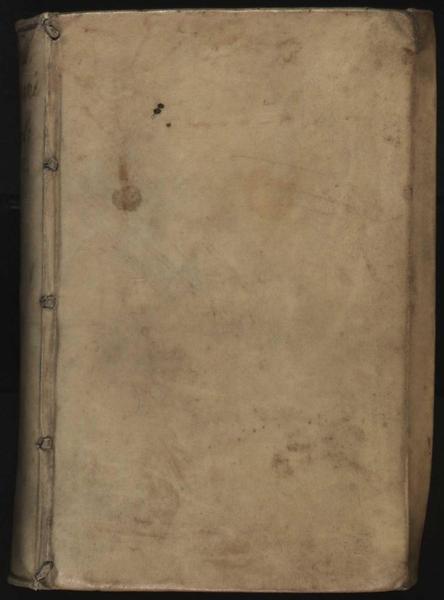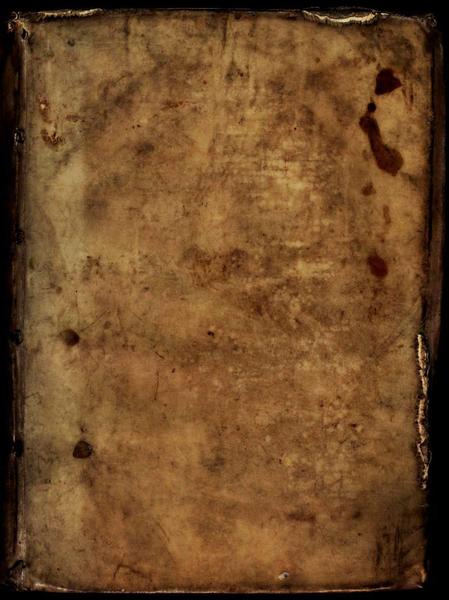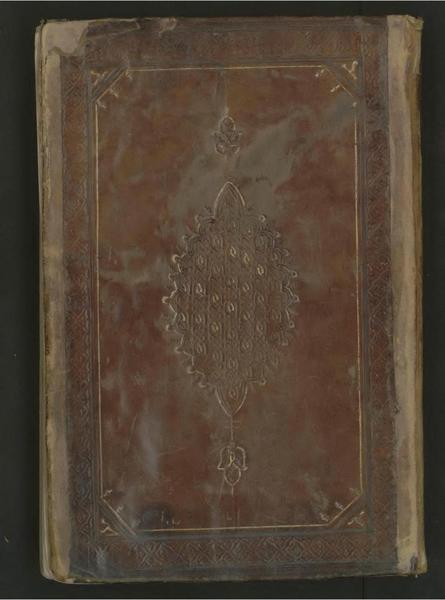 1
1title: Iraqi Fragment of a Garment - Walters 83522
artist:
Iraqi
Caliph al-Muqtadir (Iraqi, reigned 908-932)date: between 900 and 950
medium: silk warp, cotton mulham weft, silk embroidery
dimensions: size cm 13.4 47 0.8
current location: Acquired by Henry Walters, 1928
credit: Walters Art Museum:
 Home page
Home page  Info about artwork
Info about artworkdescription: This fragment from a robe or other garment is the kind of cloth, called tiraz, woven in official factories and decorated with bands of Arabic inscriptions. Its inscription combines pious invocations to God and verses from the Qur'an and concludes with the phrase "May God bless Muhammad, seal of the prophets, and his entire family." Similar benedictions appear on textiles made for Caliph al-Muqtadir, the ruler of the abbasid dynasty from 908 to 932.
license:Public domain
 2
2title: Egyptian Fragment of a Tiraz - Walters 83543
artist:
Anonymous (Egypt)date: early 10th century
medium: linen, silk embroidery
dimensions: size cm height=12.6 width=12.4 depth=0.1
current location: Acquired by Henry Walters, 1928
credit: Walters Art Museum:
 Home page
Home page  Info about artwork
Info about artworkdescription: This fragment of a garment was woven in an official factory and decorated with an Arabic inscription. Such honorific inscriptions on textiles are called "tiraz" in Arabic, and "taraziden" in Persian. They combine pious invocations to God, verses from the Qur'an, and sometimes names of caliphs. On this example appears the phrase ". . . of Allah, and favor and glory to the servant of Allah. . .," a formula used to introduce the name of a caliph, a ruler of the abbasid dynasty.
license:Public domain
 3
3title: Egyptian Fragment of a Tiraz - Walters 83543 (2)
artist:
Anonymous (Egypt)date: early 10th century
medium: linen, silk embroidery
dimensions: size cm height=12.6 width=12.4 depth=0.1
current location: Acquired by Henry Walters, 1928
credit: Walters Art Museum:
 Home page
Home page  Info about artwork
Info about artworkdescription: This fragment of a garment was woven in an official factory and decorated with an Arabic inscription. Such honorific inscriptions on textiles are called "tiraz" in Arabic, and "taraziden" in Persian. They combine pious invocations to God, verses from the Qur'an, and sometimes names of caliphs. On this example appears the phrase ". . . of Allah, and favor and glory to the servant of Allah. . .," a formula used to introduce the name of a caliph, a ruler of the abbasid dynasty.
license:Public domain
 4
4title: Muḥammad al-Farghānī’s Elements of Chronology and Astronomy
artist: Farghānī, flourished 861
date: 1590
medium: ru 1=Книги fr 1=Livres en 1=Books zh 1=图书 pt 1=Livros ar 1=كتب es 1=Libros
dimensions: en 1=584 pages : illustrations
current location: ru|1=Национальная библиотека Катара fr|1=Bibliothèque nationale du Qatar en|1=Qatar National Library zh|1=卡塔尔国家图书馆 pt|1=Biblioteca Nacional do Catar ar|1=مكتبة قطر الوطنية es|1=Biblioteca Nacional de Catar
description: This work is a Latin translation of al-Farghānī’s influential and well-known Kitāb jawāmiʿ ʿilm al-nujūm wa uṣūl al-ḥarakāt al-samāwīya (Book of generalities of astronomy and bases of celestial motions). Aḥmad ibn Moḥammad ibn Kathīr al-Farghānī was an astronomer who flourished at the court of the early abbasid caliphs. He appears to have been active in the court of al-Ma’mun. If he is the same figure who is said to have been entrusted by al-Mutawakkil with the construction of the nilometer in Cairo, then he would have been active from the early decades of the ninth century to his death in 861 (spanning the rules of al-Ma’mun, al-Muʿtaṣim, al-Wāthiq, and al-Mutawakkil). Al-Farghānī, the name by which the astronomer would have been known at the abbasid court, and which was Latinized to Alfraganus, indicates the Ferghana Valley (in present-day Uzbekistan) as his birthplace, in the Persian or Perso-Turkic cultural realm of Central Asia. The same work by al-Farghānī has various titles in Arabic, including Kitāb fī uṣūl ‘ilm al-nujūm (Book of generalities of astronomy and bases of celestial motions) and Kitāb al-hay’a fī fuṣūl al-thalāthīn (Book on the configuration [of the heavenly spheres] in thirty chapters). The work originally was translated into Latin by Johannes Hispalensis (John of Seville, flourished mid-12th century), and Gherardo da Cremona (circa 1114–87). It was also translated into Hebrew by Jacob Anatoli (1194–1256). The Latin edition presented here is the translation by Jacob Christmann (1554–1613) of Anatoli’s Hebrew translation, published in Frankfurt in 1590. Christmann includes a lengthy commentary on the Egyptian, Roman, and Persian calendars, which was likely derived from Anatoli. Christmann also adds an appendix to al-Farghānī’s work, at the conclusion of which he mentions his difficulties in editing al-Farghānī while lacking suitable Arabic copies of the work, bemoaning as well the obscurities remaining in his translation. Invoking the help needed from printers in Italy and Spain, he envisions a time when an authoritative copy of al-Farghānī’s work will become available. This lament by a Renaissance humanist in 1590 about the difficulty of printing a scientific work that predated his era by more than seven centuries is a telling detail that highlights the influence that scientific texts produced in the Islamic lands had on Renaissance Europe. Christmann dedicates his translation to the German prince, Johann Casimir, Count Palatine of the Rhine (1543–92).
Astronomy, Arab; Calendarslicense:Public domain
 5
5title: Muḥammad al-Farghānī’s Elements of Chronology and Astronomy
artist: Farghānī, flourished 861
date: 1669
medium: ru 1=Книги fr 1=Livres en 1=Books zh 1=图书 pt 1=Livros ar 1=كتب es 1=Libros
dimensions: en 1=565 pages ; 20 centimeters
current location: ru|1=Национальная библиотека Катара fr|1=Bibliothèque nationale du Qatar en|1=Qatar National Library zh|1=卡塔尔国家图书馆 pt|1=Biblioteca Nacional do Catar ar|1=مكتبة قطر الوطنية es|1=Biblioteca Nacional de Catar
description: Aḥmad ibn Moḥammad ibn Kathīr al-Farghānī (flourished 861) was an astronomer who worked at the court of the early abbasid caliphs. He appears to have been active in the court of al-Ma’mun, and he may well be the same figure who is said to have been entrusted by al-Mutawakkil with the construction of the nilometer in Cairo. In that case, he would have been active from the early decades of the ninth century to his death in 861 (spanning the rules of al-Ma’mun, al-Muʿtaṣim, al-Wāthiq, and al-Mutawakkil). Al-Farghānī, the name by which the astronomer would have been known at the abbasid court, and which was Latinized to Alfraganus, indicates the Ferghana Valley (present-day Uzbekistan) as his birthplace, in the Persian or Perso-Turkic cultural realm of Central Asia. Presented here is an Arabic edition with Latin translation of al-Farghānī’s influential and well-known Kitāb jawāmiʿ ʿilm al-nujūm wa uṣūl al-ḥarakāt al-samāwīya (Book of generalities of astronomy and bases of celestial motions). The Arabic title in this edition is slightly modified. The same work by al-Farghānī has various other titles in Arabic, including Kitāb fī uṣūl ‘ilm al-nujūm (Book of generalities of astronomy and bases of celestial motions) and Kitāb al-hay’a fī fuṣūl al-thalāthīn (Book on the configuration [of the heavenly spheres] in thirty chapters). The work was originally translated into Latin by Johannes Hispalensis (John of Seville, flourished mid-12th century), and Gerard of Cremona (circa 1114–87). It was also translated into Hebrew by Jacob Anatoli (circa 1194–1256). This is the first printed Arabic edition of the book, based on the manuscript at the University of Leiden, printed in Amsterdam in 1669. It has 109 pages in Arabic and 306 in Latin, in addition to the table of contents.
Astronomy, Arab; Astronomy, Medieval; Calendarslicense:Public domain
 6
6title: Commentary on Hippocrates' Aphorisms
artist: Ibn Abī Ṣādiq al-Nīsābūrī, Abū al-Qāsim ʻAbd al-Raḥmān ibn ʻAlī, died circa 1068
date: between 1300 and 1399
medium: ru 1=Рукописи fr 1=Manuscrits en 1=Manuscripts zh 1=手稿 pt 1=Manuscritos ar 1=مخطوطات es 1=Manuscritos
dimensions: en 1=120 leaves (21 lines), bound : paper : 26 x 17 centimeters
current location: ru|1=Библиотека Конгресса fr|1=Bibliothèque du Congrès en|1=Library of Congress zh|1=国会图书馆 pt|1=Biblioteca do Congresso ar|1=مكتبة الكونغرس es|1=Biblioteca del Congreso
description: The Greek medical tradition survived long after the decline of the Hellenistic world, thanks to the work of Arabic translators and commentators, who preserved the theoretical and practical discoveries of Greek physicians in Arabic translations. The translation of Greek medical texts into Arabic was mainly conducted under the ‘abbasid caliphs and, in particular, in the circle of intellectuals linked to the name of Ḥunayn ibn Isḥāq (circa 809–73). Among the Greek physicians, Hippocrates has always been considered an exemplary character, the symbol of the true and scrupulous physician, thanks mainly to the high regard for this founding figure shown in works by Galen and other physicians. The Aphorisms (sayings) of Hippocrates were widely commented upon in both the Greek and Islamic worlds. The present manuscript is a clear example of this tradition, as it consists of a fragmentary 14th-century copy of an 11th-century commentary on Hippocrates' Fuṣul (Sayings) by the Persian physician Ibn Abī Ṣādiq al-Nīsābūrī. The Arabic translations of Hippocrates' aphorisms are underlined in red ink, while a remnant of the text preserves al-Nīsābūrī's commentary. An interesting ownership note in English, found in the opening folio of the manuscript, indicates that it was given as a present to the American surgeon Valentine Mott by Dr. Franz Pruner, who worked as the head physician of Cairo hospital after 1838. The title page records several previous owners from the 15th century to the 18th, and the manuscript may date back to the 14th century.
Arabic manuscripts; Medicine, Arab; Medicine, Greek and Romanlicense:Public domain
 7
7title: Egypt, probably Tinnis, Abbasid period, reign of Caliph al Muqtadir - Fragmentary embroidered tiraz - 1932.28 - Cleveland Museum of Art
artist: unknown
date: 918
medium: Plain weave with embroidery: linen and silk
dimensions: Overall: 20.7 x 26.7 cm (8 1/8 x 10 1/2 in.)
current location: Cleveland Museum of Art
source: link
credit: link
license:
CC0
 8
8title: Sur Das Gujarati The siege of Arbela in the era of Hulagu Khan, from a Chingiz-nama (Book of - 1947.502 - Cleveland Museum of Art
artist:
Sur Das Gujaratidate: 1591
medium: Opaque watercolor, ink and gold on paper
dimensions: Image: 34 x 20 cm (13 3/8 x 7 7/8 in.); Overall: 38.5 x 25 cm (15 3/16 x 9 13/16 in.); with mat: 49 x 36.3 cm (19 5/16 x 14 5/16 in.)
current location: institution:Cleveland Museum of Art
source: link
credit: link
description:
Akbar, the third Mughal emperor of India, commissioned an illustrated copy of the Chingiz-nama, a historical text written in Persian during the early 1300s by a Jewish scholar who converted to Islam. The Chingiz-nama is an account of the conquests of Akbar’s ancestors, the Mongols, who swept across the Asian continent from Siberia to the Mediterranean Sea during the 1200s. This page describes the final momentous defeat of the caliph of Baghdad, the religious head of Sunni Islam and political leader of the abbasid dynasty, with the names of all the caliphs who came before him listed in red at the top.license:
CC0
 9
9title: Anonymous Death of the Abbasid Caliph, Al-Mustarshid bi-llah, Assassinated During the Reign of Sultan Mas’ud, - 1965.51.6 - Yale University Art Gallery
artist:
date: 1425
source: link
credit: link
license:Public domain

title: Egypt, probably Tinnis, Abbasid period, reign of Caliph al Muqtadir - Fragmentary embroidered tiraz - 1932.28 - Cleveland Museum of Art
artist: unknown
date: between 918 and 920
medium: Plain weave with embroidery: linen and silk
dimensions: Overall: 20.7 x 26.7 cm (8 1/8 x 10 1/2 in.)
current location: institution:Cleveland Museum of Art
source: link
credit: link
license:
CC0





